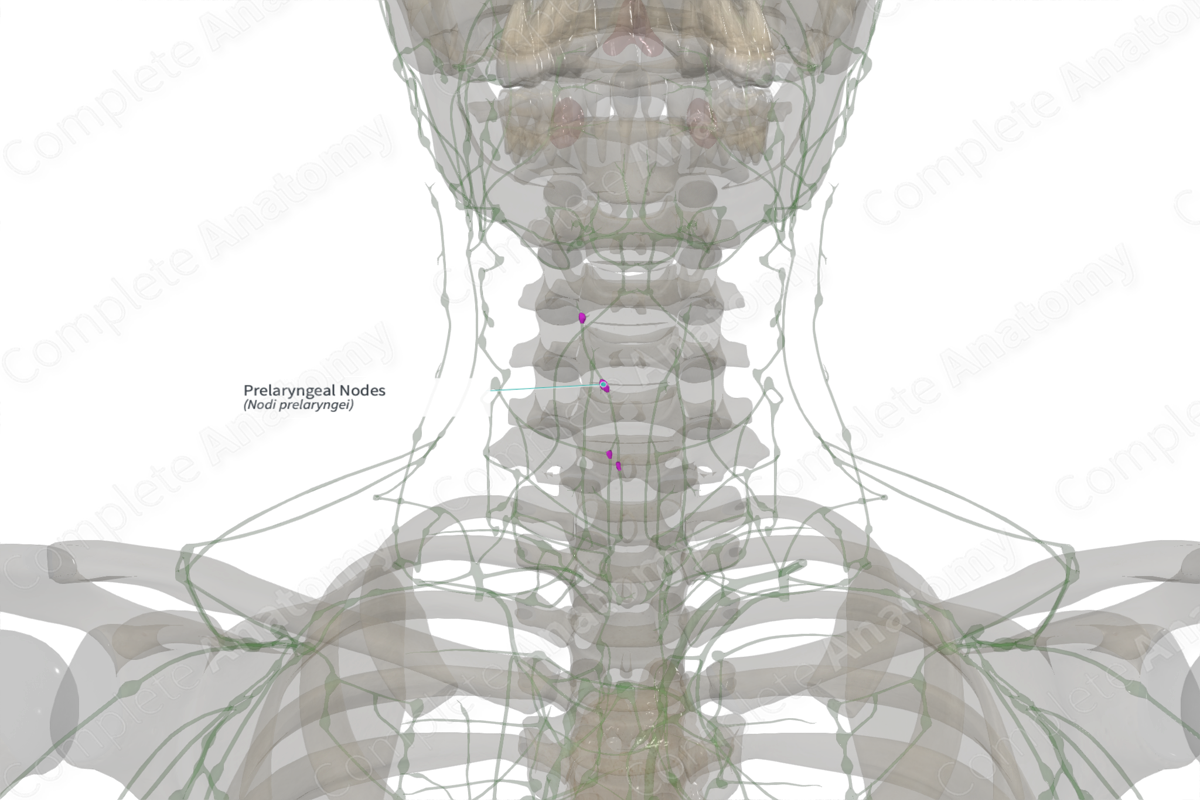
Quick Facts
Location: Anterior to the laryngeal cartilages and membranes.
Drainage: Epiglottis, piriform recess, aryepiglottic fold, supraglottic part of the larynx, and the thyroid gland.
Direction of Flow: Internal jugular nodes > supraclavicular nodes > jugular trunk > thoracic duct (left) or right lymphatic duct.
Related parts of the anatomy
Description
The prelaryngeal lymph nodes are organized in a vertical line from the thyrohyoid ligament to the cricothyroid ligament, running anterolateral to these structures. They can be categorized into three collections of nodes with one or two nodes in each collection. These are the upper, middle, and lower (cricothyroid) nodes. The upper nodes have a close anatomical relation to the thyrohyoid ligament, the middle is anterolateral to the thyroid cartilage, and the lower nodes are found close to the cricothyroid ligament (Földi et al., 2012).
These nodes drain some of the deeper structures of the neck and could be broadly categorized as the structures posterior to the aforementioned cartilages and ligaments. For example, the epiglottis, piriform recess, aryepiglottic fold, and supraglottic part of the larynx.
Efferent vessels carry lymph from these areas directly to the internal jugular nodes from which they drain into the supraclavicular nodes, the jugular trunk and the thoracic duct (left) or the right lymphatic duct.
List of Clinical Correlates
—Metastatic deposits from malignancies of the thyroid, glottic, and subglottic larynx, the apex of the piriform sinus, and the cervical esophagus
References
Földi, M., Földi, E., Strößenreuther, R. and Kubik, S. (2012) Földi's Textbook of Lymphology: for Physicians and Lymphedema Therapists. Elsevier Health Sciences.
